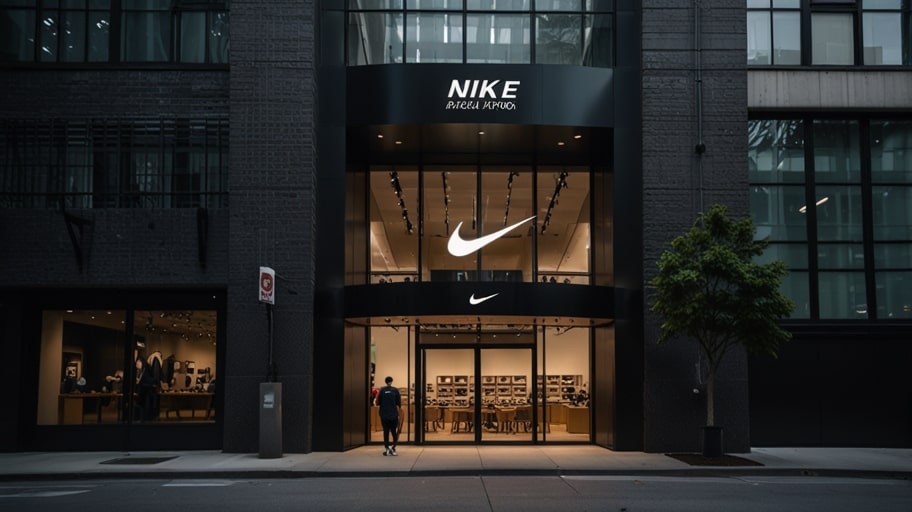Nike, the international sportswear company, has been one of the most significant producers and is canceling its trade with China in response to the pressure of the tariffs being imposed in the United States. The strategic move was announced in June 2025 as a way to strengthen its supply chain in the face of geopolitical uncertainties.
Why Reduce China’s Dependence?
China has been Nike’s cradle of manufacturing activities for a long time, but the influx of U.S tariffs is endangering profitability. Diversifying production to other countries, such as Vietnam and Indonesia, is one way Nike can reduce costs and ensure it retains its competitive advantage in the international market.
An Answer to Geopolitical Tensions
The U.S.-China trade relations have aggravated, and the Tariffs have affected the inbound products. The relocation of Nike is an elaborate initiative aimed at maintaining its $ 50 billion market capitalization as a means to achieve a secure operating environment amidst the dynamics of unstable trade policies and economic cycles.
Expanding Global Manufacturing
Nike is preparing to produce more in Southeast Asia and Latin America. There is currently a large presence of factories in Vietnam, which manufacture a significant percentage of the country’s footwear. These factories are also set to expand into India and Mexico, particularly in the apparel sector.
Balancing Cost and Efficiency
Such risks as increased costs of labour in certain areas apply in the relocation of production. Nike is automating and working with localities to remain efficient, and all this is done to keep its iconic sneakers at a price every consumer can afford.
Technology Drives Supply Chain Innovation
The smart manufacturing technology adopted by Nike, utilizing technologies such as AI design and robotics, enhances production flexibility. These developments give the company the ability to be flexible to the local needs and still maintain the quality and design that it is renowned for.
Pricing and Product Delivery to Consumers
Nike needs to diversify its supply chain to stabilize prices even after the tariff increase. This is the approach that helps to guarantee that such popular products as Air Max and React lines are available to the global customers of the company.
Sustainability in the Spotlight
Nike is also positioning its supply chain transition into sustainability. New factories are focused on using eco-friendly materials and reducing the energy intake of the production, as more and more people want apparel brands to be environmentally friendly.
Problems of Quick Switching
Supplies moving out of China involve retraining and developing a new supply chain. To overcome these challenges, Nike is resorting to strategic affiliations and investment in the domestic infrastructure so that the transition is uninterrupted.
Stability in the Investor Confidence
Nike’s positive attitude towards finding solutions to the crisis has been well-received by investors, and this has enabled its stock to remain resilient in 2025. The fact that the company has overcome global obstacles and remains in a growth position is an indication that the company is likely to succeed in market dominance in a few years.
Sportswear in the Competitive Landscape
Nike is experiencing stiff competition from other brands, such as Adidas and some other new brands, such as Lululemon. The diversity of its supply has also made it more competitive, as delivery can take place faster, and it can produce where its customers want, due to its diversification of production.
Labor and Ethical Issues
There have been criticisms regarding the working conditions in the emerging manufacturing centres. In order to maintain ethical standards in all its global operations, Nike is tightening supplier audits and fair wage programs.
U.S. Market as a Priority
It is the U.S., which is Nike’s largest market, that benefits the most by this change. Nike will be able to dominate the American sports dress market worth 150 billion dollars by maintaining competitive prices with the help of the reduction in tariff-related costs.
Opportunities for Expansion in the World
The opening up of new markets is available with the diversification of production. Nike is also looking to expand to Africa and South America, where increasing numbers of middle-class consumers offer unexploited prospects to its performance-based products.
Technology as the Competitive Advantage
Nike is using data analytics to make demand forecasts as well as streamline inventory, which is a game-changer. Such technological orientation trims wastages and helps Nike move its products quickly to the consumers, strengthening Nike’s leadership in the industry.
Nike Future Outlook
Nike has strengthened its supply chain to become a leading organization in the future. With its sound mix of cost, sustainability, and innovativeness, the company is set to succeed in the volatile world market, where it has established a reference point to other organizations.
Conclusion: Nike Vision of Resilience
This plan by Nike to move away from less dependence on China is a radical strategy to make its business future-proof. With the help of diversification and technology, Nike is reshaping the sphere of sportswear production, making it one of the global leaders in the uncertainty of uncertainty.
